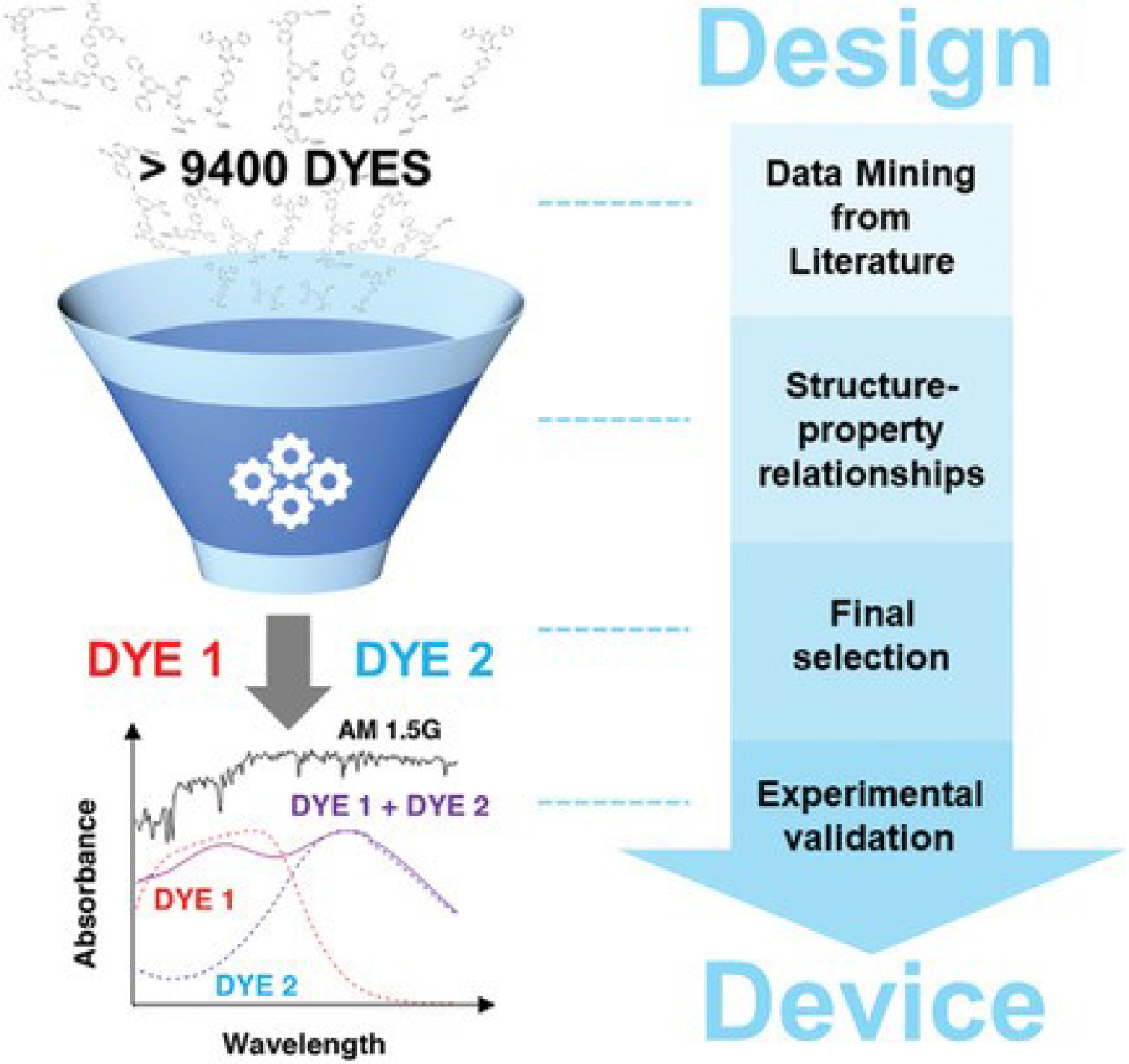Finding the right dyes for a new type of solar cell can be challenging, but this study used supercomputers to speed up the process.
Advanced Scientific Computing Research
October 29, 2019
The Science
Organic dye-sensitized solar cells (DSSCs) are an emerging technology that could help meet our energy needs. Manufacturers can produce DSSCs using low-cost techniques that can be scaled up to high production rates. However, traditional methods test individual dyes to find the correct dye, or set of dyes that are stable and efficient. Unfortunately, there are up to 1080 possible organic molecules. This project combined data mining, machine learning, simulations, fabrication and experimental validation to study every step of design process. The result developed two organic dyes to use together in a new solar cell. This new cell can convert solar power about as efficiently as the best industry standard ones.
The Impact
Solar power is a sustainable and renewable source of energy. Even though the cost of solar cells has dropped from $76.67 per watt-hour in 1977 to just $0.10 per watt-hour in 2018, solar cells only produce 10% of the electricity in the United States. Finding dyes needed for efficient DSSCs could substantially boost the adaptation of solar power. In addition to use in traditional solar cells, DSSCs are transparent, which means that builders can use them in tinted solar windows in buildings. They can also be used on flexible surfaces or in fabric that can collect energy as people wear it.
Summary
The first batch of 9,431 organic dyes in this study were selected from a pool of possible and known compounds that are found in thousands of specialized journal papers using text mining techniques. Next, the candidate set was refined using simulations and data analytics to a subset of five dyes. Both data mining documents and simulations were performed using the Argonne Leadership Computing Facility’s supercomputing resources. These five selected dyes were tested in the laboratory and combined in different proportions to produce 17 solar cells. All of these cells were fabricated and tested using experiments. A particular combination of two dyes was found to produce a stable solar cell with exceptional panchromatic properties that showed an efficiency comparable to the best inorganic dyes sensitized solar cell.
Contact
Jacqueline M. Cole,
University of Cambridge/Argonne National Laboratory
jmc61@cam.ac.uk
Funding
This project received funding from the Winston Churchill Foundation of the United States and used resources from the Center of Nanoscale Materials and the Argonne Leadership Computing Facility, which are DOE Office of Science Facilities, all under contract no. DE-AC02-06CH11357.
Publications
Cooper, C. B. et al. “Design-to-Device Approach Affords Panchromatic Co-Sensitized Solar Cells.” Advanced Energy Materials. 9, 1802820 (2018). [DOI: 10.1002/aenm.201802820]

